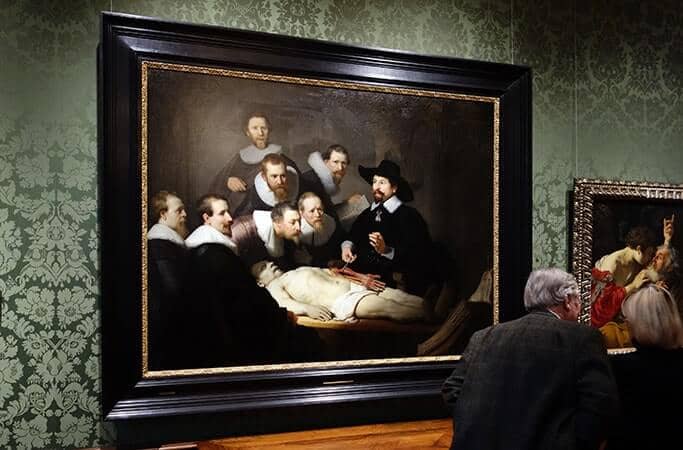The Anatomy Lesson of Dr. Nicolaes Tulp, 1632 by Rembrandt

It is not hard to believe that Rembrandt's Anatomy Lesson of Dr. Nicolaes Tulp had the effect of a bombshell upon his contemporaries. The younger artist has brought an unusual tension into the group and raised the act of lecturing to a dramatic event. He has related the speaker and the subject of his demonstration most intensely to the audience of seven listeners, while the older master remained content with a loose co-ordination of the individual portraits. Within Rembrandt's closely knit group the corpse exerts the strongest attraction as the broadest area of intense light. The lecturer provides a strong accent through the darkness of his costume, which contrasts powerfully with the brightness of the corpse and more sharply with the bright spots in his own figure, the highlighted hands, face, and collar. Dr. Tulp alone wears a hat - a formality which marks the official nature of his demonstration - while the seven listeners are bareheaded. They form an area with lighter value contrasts within the group. Each of the faces is set off against a large white collar, and the greyish atmosphere of the room softens the outlines. The colour is cool and almost monochrome, with the main accents left to the chiaroscuro. The tones vary from grey to brown and from white to black. The subdued greenish shadows in the corpse form a startling contrast to the red touches in the dissected arm.

One of the most fascinating features in this group portrait is the subtle variation in the attentiveness of the listeners. The three directly behind the corpse are leaning forward in their eagerness to follow the demonstration closely. But each reacts in a different way to Dr. Tulp's words. The two doctors seated at the extreme left attend less closely. One of them looks at Dr. Tulp's face rather than at his action; the other turns his eyes out of the picture. The rear figure, who occupies the highest position in the group, is the only one whose gaze establishes a definite contact with the spectator, as he points to the scene in front of him. His colleague to the right, who hold a sheet of paper inscribed with all the names, likewise looks out toward the spectator, but with a less direct appeal. Varying degrees of interest are thus recorded and tenseness of the moment is relieved by the elements of relaxation.




















